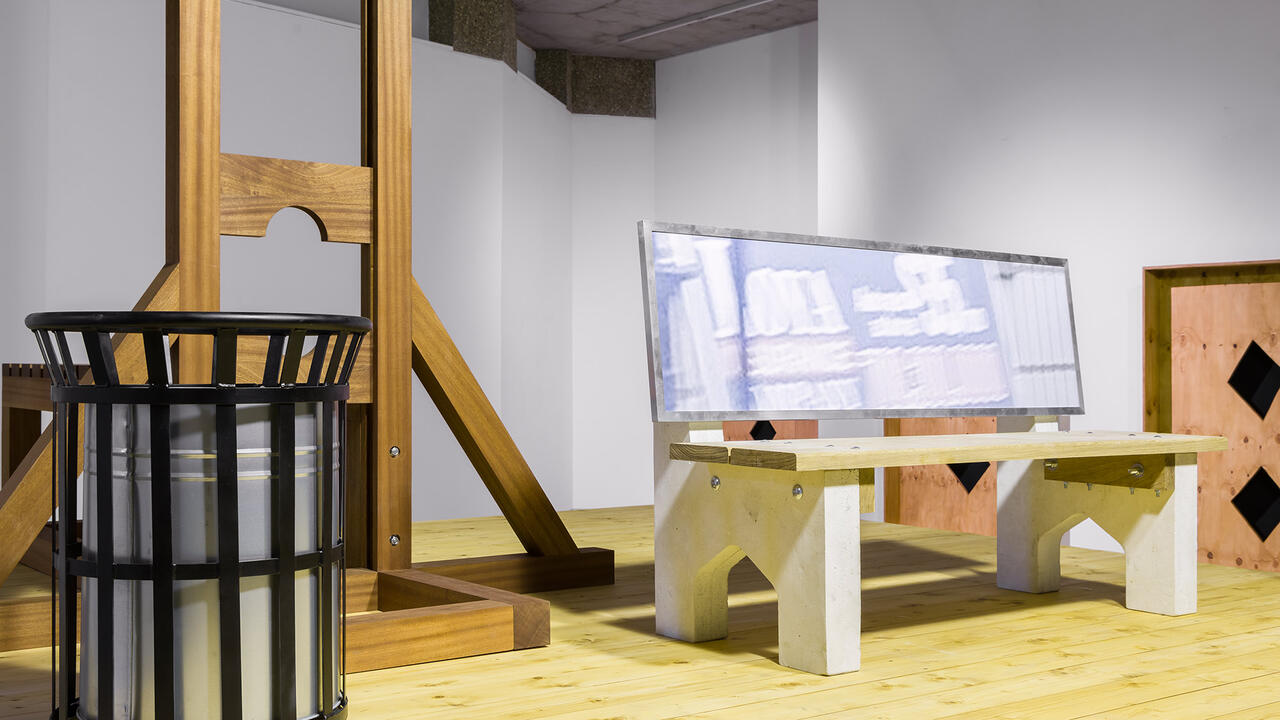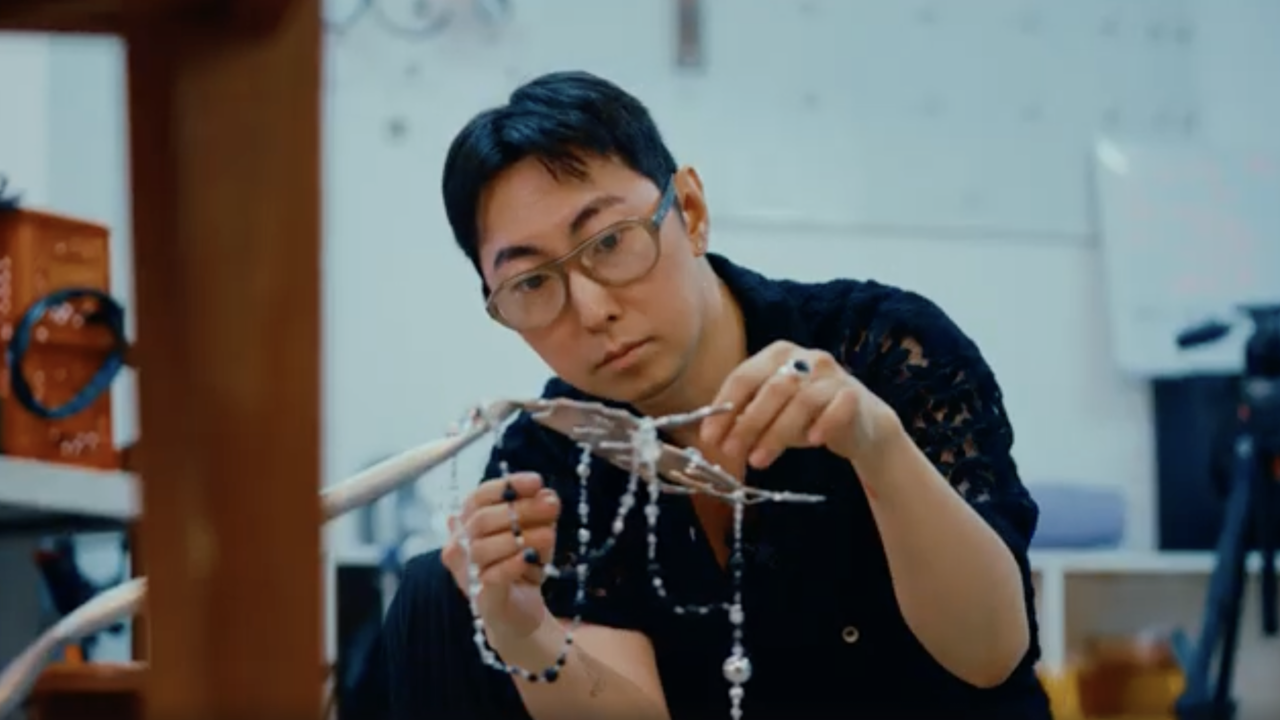Rivane Neuenschwander

Rivane Neuenschwander is like a conductor of invisible orchestras: she engages external forces to make ephemeral art with sensuality and rigour but also with the lightest possible touch, addressing themes such as chance, temporality, nature and language, or narrative. Often her works are interactive, as in Story of an Other (2005), which was created for the 2005 Venice Biennale and shown again in her New York solo début, ‘Other Stories and Stories of Others’. A typewriter modified to produce only symbols and dots, and on which visitors are invited to type, it was exhibited alongside some of their creations, ranging from words in various languages, such as ‘PAROLE’ or ‘PAINFUL’, to blurry faces, wavy lines and shapes, private jokes and political exhortations.
‘Ethereal materialism’, a phrase the Brazilian Neuenschwander has used in the past to describe her project, applied especially well to the deceptively simple central installation. Secondary Stories (2006) consisted of brightly coloured tissue-paper circles of varying sizes that were blown by fans inside a false ceiling made of translucent plastic, creating kaleidoscopic compositions as they drifted about. Occasionally a circle found its way to one of several round holes cut through the plastic, squeezed through the opening and wafted to the floor, which became as littered with wispy paper cut-outs as a pavement with autumn leaves. Viewers stepped on the circles, moving and sometimes dirtying them; children – natural connoisseurs of Neuenschwander’s work – were allowed to pick up handfuls and carry them away.
The highlight, though, was the DVD projection Quarta-Feira de Cinzas/Epilogue (Ash Wednesday/Epilogue, 2006), made with Neuenschwander’s frequent collaborator Cao Guimarães – and an army of ants. For this absurd, mesmerizing, faintly magical depiction of epic achievement in miniature, Neuenschwander coaxed ants to transport disk-shaped pieces of sugar-coated confetti. Work and artistic creation become interchangeable with celebration: the title alludes to carnival, and the sprightly soundtrack is a samba played with matchsticks on a table-top. The video opens with a single ant dragging a piece of gold confetti, then another ant with a blue one. We then see two struggling to get a grip on some confetti and another pair squabbling over their find. More and more ants, and bright circles, become visible, some pieces of confetti disperse on the ground and others are waved like flags as they are toted from place to place. The ants perform amazing feats – racing up steep cliffs while lugging confetti ten times their size. Eventually we see the insects’ destination – a crevice in the earth – and colourful disks disappearing into its shadows before a fade to black.
Eating is an obvious theme in the video, just as it has been in many of Neuenschwander’s previous works, such as a project where she unleashed snails on sheets of rice paper and exhibited the gnawed remains. Even Secondary Stories, with its paper circles passing through the holes in the ceiling, suggests ingestion or digestion. As has been noted, her work echoes the now-familiar discourse surrounding the concept of antropofagia, as well as the emphasis on sensory experience and interactive strategies in works by Neo-Concrete artists such as Lygia Clark. At the same time, it reflects a contemporary preoccupation with language (in an earlier video ants carried banners reading ‘WORD’ and ‘WORLD’), a concern with marking the passage of time, and a restrained, almost astringent quality that undercuts the evocation of touch, scent or taste.
Another work that was more than the sum of its parts was installed in the entryway. Resembling black and white photographs of galaxies or nebulae, One Thousand and One Possible Nights (2006) comprises 38 collages in which confetti-like bits cut from pages of The Arabian Nights with a hole punch are strewn against black backgrounds. Here Neuenschwander again evoked narrative through non-verbal means. The number was significant: the gallery remained open 38 days during the show. Scheherazade, of course, prolonged her virtuoso storytelling night after night until her husband recognized her trustworthiness and spared her life. As if art were an urgent tale in constant need of retelling, One Thousand and One Possible Nights deploys a structural elegance to render visible the lifespan of a gallery show and posit it as a narrative that changes with each day’s stream of visitors.
The tiny circles/stars also rhymed with the falling tissue-paper disks in the next room and the candy-coloured wafers borne by the ants in the DVD, while the roundness of the paper shapes underlined the cyclical theme that keeps surfacing in Neuenschwander’s work. Such correspondences were too modest and carefully calibrated to be called poetic, perhaps – or at least their poetry was not, in the end, what was most important – but they had a lingering resonance that was hard to shake.
















